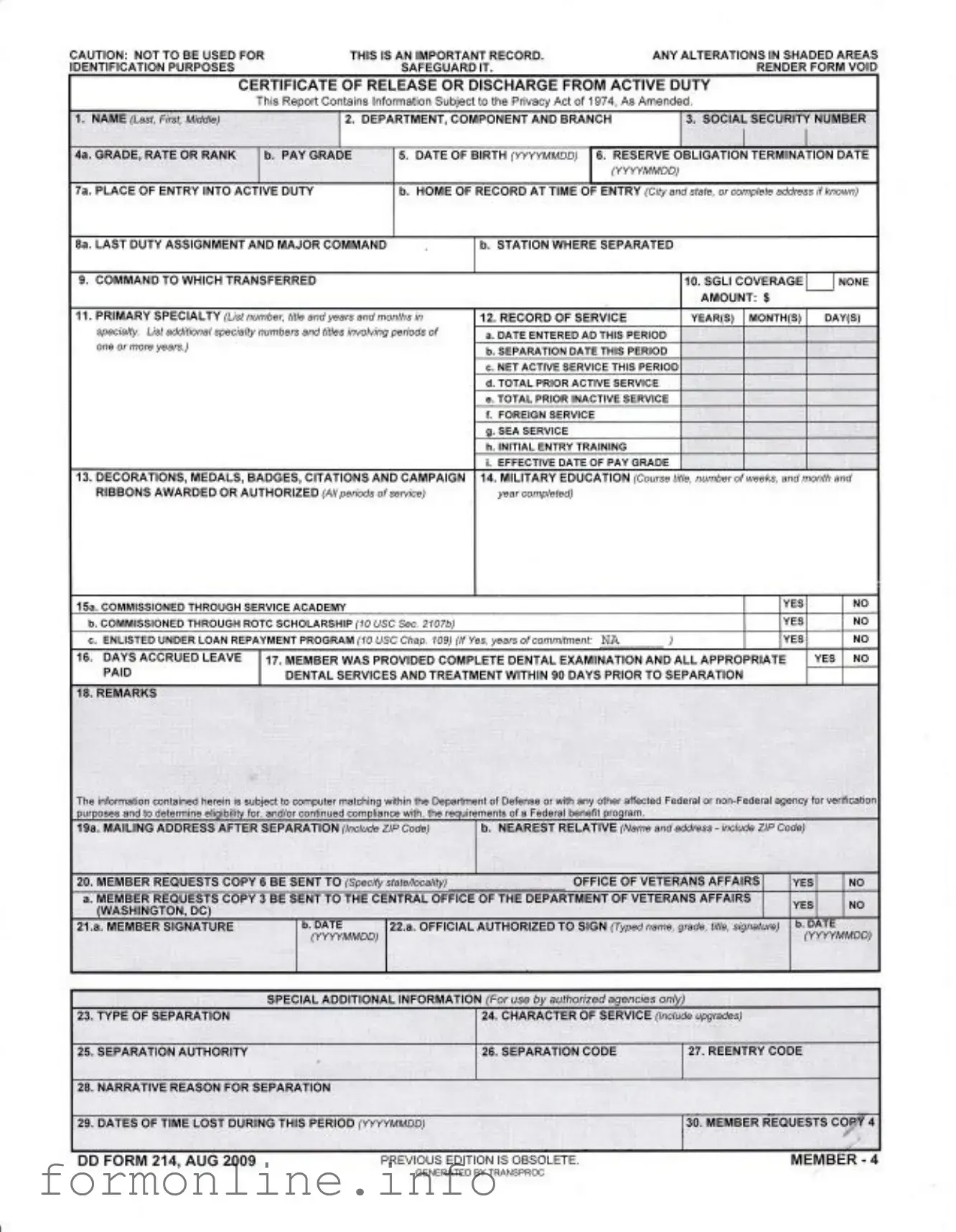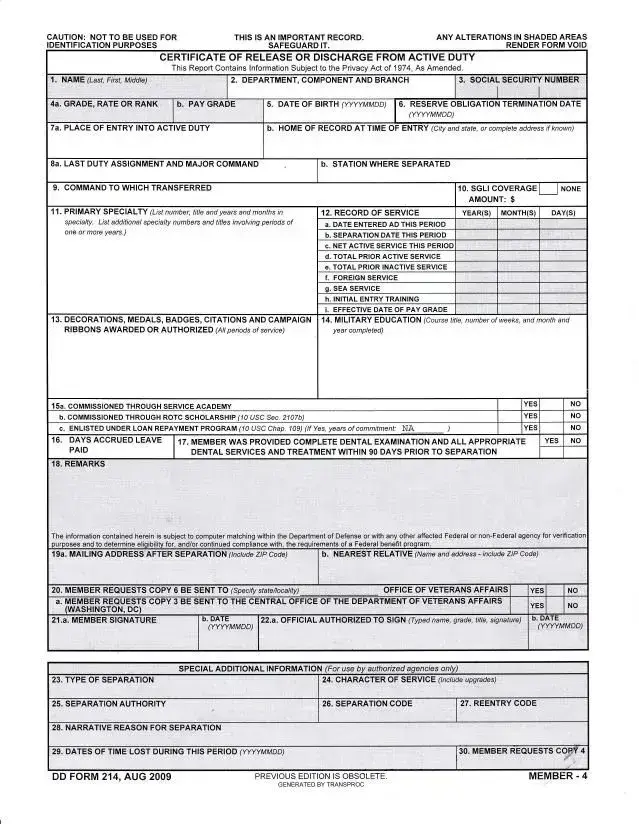Fill Out a Valid Dd 214 Form
The DD 214 form, officially known as the Certificate of Release or Discharge from Active Duty, is a crucial document for military personnel. It provides a comprehensive record of a service member's time in the military, including their discharge status, service dates, and awards received. Safeguarding this form is essential, as it is not intended for identification purposes and any alterations can render it void.
For assistance in filling out the DD 214 form, please click the button below.
Prepare Form Online

